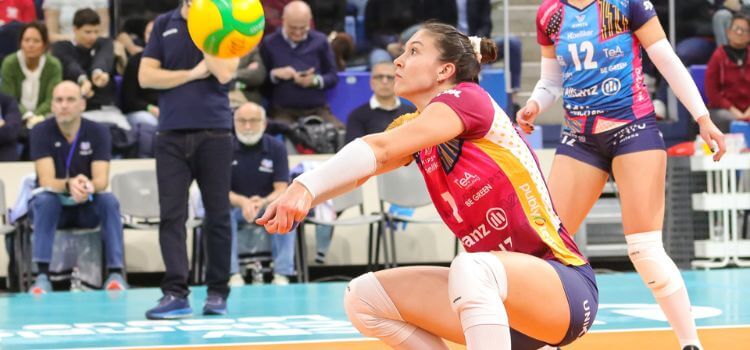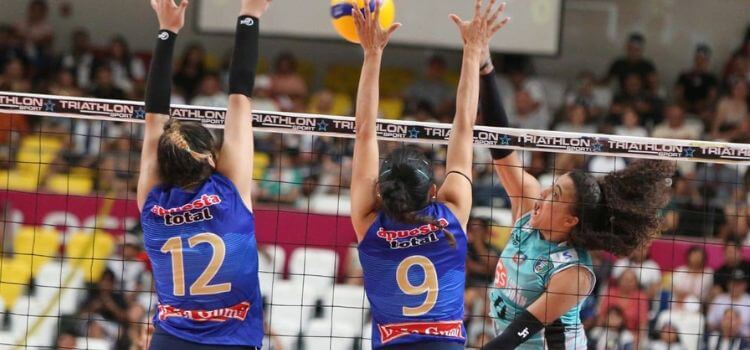As an Amazon Associate, I earn from qualifying purchases
Volleyball is a fast-paced and dynamic sport where every point matters. But beyond the rallies and cheers, data plays a crucial role in analyzing performance, identifying strengths and weaknesses, and ultimately, achieving victory. Here’s where volleyball statistics come in – a treasure trove of insights waiting to be explored.
This comprehensive guide dives deep into the What Are Good Volleyball Stats, empowering you to understand, track, and utilize them to propel your team’s success.
What Are Good Volleyball Stats : Important
Before delving into specific statistics, let’s explore the why behind them. Here are some compelling reasons why volleyball stats are valuable assets:
Read More Best Youth Volleyball Shoes: Reviewed
Identify Team Strengths and Weaknesses: Stats provide a quantitative picture of your team’s performance across different areas. You can pinpoint excelling aspects, like a high serving percentage, or areas requiring improvement, like reducing hitting errors.
Track Player Performance: Individual player stats allow coaches to assess each member’s contribution, identify areas for development, and strategize personalized training plans.
Lets See Best Volleyball Shoes for Jumping: Reviewed
Develop Winning Strategies: Analyzing past game stats helps coaches devise tactical approaches based on your team’s strengths and exploit the opponent’s weaknesses.
Motivate Players: Seeing their contributions reflected in data can motivate players, fostering a sense of accomplishment and a drive to improve individual and team performance.
Scouting Opponents: Analyzing your opponent’s past game statistics can give valuable insights into their playing style, key players, and potential areas of vulnerability.
Read More: Best Mizuno Knee Pads White: Reviewed
Key Volleyball Statistics You Need to Track
Now, let’s delve into the nitty-gritty! Here are the essential volleyball statistics categorized by their function:
Serving Stats
Serving Percentage: This metric reveals how consistently your team gets the serve in play. A high serving percentage (ideally above 90% for high school teams) indicates control and pressure on the opponent’s reception.
Lets See Best Men’s indoor Volleyball Shoes : Reviewed
Service Aces: This counts the number of times your team’s serve directly scores a point because the opponent couldn’t control it. Aim for a healthy balance between powerful serves and maintaining accuracy.
Targeted Serves: Track the number of successful serves directed towards specific areas of the opponent’s court, like targeting the weaker passer.
How to Analyze Serving Stats:
A high serving percentage combined with a decent number of service aces indicates an effective serving strategy.
Read More 11 Best Volleyball Shoes For Flat Feet: Review
If your serving percentage is low, focus on drills to improve accuracy and control.
Analyze the success rate of targeted serves to refine your strategy and exploit opponent weaknesses.
Passing Stats
Reception Attempts: This measures the total number of times your team attempts to receive the opponent’s serve. Read More 10 Best Volleyball Shoes for Middle Blocker : Reviewee
Perfect Passes: Records the number of receptions that provide the setter with a clean and high-quality setting option.
Poor Passes: This tracks the number of receptions that make it difficult for the setter to set effectively.
How to Analyze Good Volleyball Passing Stats:
A high percentage of perfect passes signifies a strong foundation for your offense.
Read More 10 Best Asics Youth Volleyball Shoes: Reviewed
If poor passes are frequent, practice drills that emphasize ball control and communication between passers.
Track the success rate of receiving different types of serves (e.g., float serves, jump serves) to identify areas for improvement.
Lets See 6 Best Youth Volleyball shoes Nike: Reviewed
Setting Stats
Assists: This counts the number of times the setter provides a good set that results in a kill by a teammate.
Setting Efficiency: This metric calculates the percentage of times the setter’s set results in a kill attempt (excluding errors).
How to Analyze Setting Stats:
A high assist count reflects the setter’s ability to distribute the ball effectively.
Analyze setting efficiency to identify if the setter needs to adjust their sets based on the attacker’s strengths.
Track the distribution of sets among hitters to ensure a balanced offensive attack.
Attacking Stats
Kills: This counts the number of times your team successfully attacks the ball, resulting in a point or forcing the opponent to make an error while trying to defend it.
Let See 12 Best Volleyball Shoes for Wide Feet: Tested
Hitting Attempts: This reflects the total number of times your team attempts to attack the ball.
Hitting Percentage: This crucial metric calculates the percentage of attacks that result in a kill minus hitting errors, divided by the total attempts. A good hitting percentage for outside/opposite hitters is around .250, while middle blockers aim for Continuing the Breakdown of Volleyball Stats:
Attacking Stats
Hitting Errors: This tracks the number of attacks that result in a point for the opponent due to factors like hitting the ball out of bounds, being blocked, or setting errors.
Read More: Best Volleyball jump box
Kills per Set: This metric calculates the average number of kills your team scores per set.
How to Analyze Attacking Stats:
A high kill count is impressive, but focus on hitting percentage for a more accurate picture of efficiency. Aim for a team hitting percentage above .300.
Lets See9 Best Volleyball Rebounder: Reviewed
Analyze the types of hitting errors to identify areas for improvement. Are there too many hitting out of bounds errors? Is blocking hindering your attack?
Track kills per set to assess your team’s offensive consistency throughout the game.
Blocking Stats
Blocks: This counts the number of times your team successfully blocks the opponent’s attack, forcing them to either re-attack or resulting in a point for your team.
Block Assists: This tracks the number of times two or more players combine to block the opponent’s attack.
How to Analyze Blocking Stats:
A high number of blocks indicates a strong defensive presence at the net.
Read More 20 Best Men’s Volleyball Knee Pads : 100% Tested
Analyze block assists to see if your team is effectively coordinating their blocking strategy.
Track the success rate of blocking different hitters on the opponent’s team to strategize effective blocking positioning.
Digging Stats
Digs: This counts the number of times your team successfully receives an opponent’s attack that would have otherwise resulted in a point for them. A good dig extends the rally and keeps your team in the point.
Lets See Why 22 Best Beach Volleyball Swimsuits: you need to Know?
How to Analyze Digging Stats:
A high number of digs showcases your team’s defensive resilience.
Analyze the location of digs (e.g., front row, back row) to identify areas where your defense might be vulnerable.
Track the players with the most digs to acknowledge their defensive contributions.
Advanced Good Volleyball Stats
Beyond the core statistics, volleyball offers a deeper dive with advanced metrics for a more comprehensive analysis. Here are a few examples:
Serving Efficiency: This metric combines serving percentage and service aces, providing a holistic view of your serving effectiveness.
Lets See Volleyball Setting Machine : The Future of Volleyball Training
Opponent Errors: This tracks the number of times the opponent commits errors, giving insights into their struggles and potential areas to exploit.
Sideout Percentage: This measures the percentage of times your team scores a point after the opponent’s serve. A high sideout percentage indicates your ability to regain control after losing the serve.
Tracking and Utilizing Volleyball Stats: Unleash Your Team’s Potential
Volleyball is a fast-paced and dynamic sport where every point hinges on strategy and execution. But beyond the rallies and cheers, data plays a crucial role in analyzing performance, identifying strengths and weaknesses, and ultimately, achieving victory.
This guide delves into the world of volleyball statistics, empowering you to track and utilize them to propel your team’s success.
Why What Are Good Volleyball Stats Matter
Volleyball statistics go beyond mere numbers. They provide a quantitative picture of your team’s performance across different areas, offering valuable insights like:
Identifying Team Strengths and Weaknesses: Stats pinpoint areas excelling, like a high serving percentage, or needing improvement, like reducing hitting errors.
Tracking Player Performance: Individual player stats allow coaches to assess each member’s contribution, identify areas for development, and strategize personalized training plans.
Read More Volleyball Training Machine Price
Developing Winning Strategies: Analyzing past game stats helps coaches devise tactical approaches based on your team’s strengths and exploit the opponent’s weaknesses.
Motivate Players: Seeing their contributions reflected in data can motivate players, fostering a sense of accomplishment and a drive to improve individual and team performance.
Scouting Opponents: Analyzing your opponent’s past game statistics can give valuable insights into their playing style, key players, and potential areas of vulnerability.
Essential Stats for Tracking
Now, let’s delve into the key volleyball statistics categorized by their function:
Serving Stats:
Serving Percentage: Measures how consistently your team gets the serve in play (ideally above 90% for high school teams).
Service Aces: Counts the number of times your team’s serve directly scores a point because the opponent couldn’t control it.
Targeted Serves: Tracks the number of successful serves directed towards specific areas of the opponent’s court.
Read More : Best Used Volleyball Training Equipment
Passing Stats:
Reception Attempts: Measures the total number of times your team attempts to receive the opponent’s serve.
Perfect Passes: Records the number of receptions that provide the setter with a clean and high-quality setting option.
Poor Passes: Tracks the number of receptions that make it difficult for the setter to set effectively.
Setting Stats:
Assists: Counts the number of times the setter provides a good set that results in a kill by a teammate.
Setting Efficiency: Calculates the percentage of times the setter’s set results in a kill attempt (excluding errors). Read More: 09 best volleyball shoes for hitters: Reviewed
Attacking Stats:
Kills: Counts the number of times your team successfully attacks the ball, resulting in a point or forcing the opponent to make an error.
Hitting Attempts: Reflects the total number of times your team attempts to attack the ball.
Hitting Percentage: A crucial metric calculating the percentage of attacks that result in a kill minus hitting errors, divided by the total attempts.
Hitting Errors: Tracks the number of attacks that result in a point for the opponent due to factors like hitting the ball out of bounds, being blocked, or setting errors.
Kills per Set: Calculates the average number of kills your team scores per set.
Blocking Stats:
Blocks: Counts the number of times your team successfully blocks the opponent’s attack, forcing them to either re-attack or resulting in a point for your team.
Read More: Best Volleyball Poles
Block Assists: Tracks the number of times two or more players combine to block the opponent’s attack.
Digging Stats:
Digs: Counts the number of times your team successfully receives an opponent’s attack that would have otherwise resulted in a point for them.
Utilizing Stats for Success
Now that you understand the key stats, here’s how to effectively track and utilize them:
Choose a Stats Tracking System: Explore online platforms and mobile apps designed for volleyball stat tracking and analysis. Consider factors like ease of use, data visualization options, and compatibility with your league or team needs.
Develop a Stat Tracking Sheet: If you prefer a manual approach, create a clear and organized sheet to record relevant stats during games. Include sections for different areas like serving, passing, and individual player performance.
Analyze Stats After Each Game: Dedicate time after each game to analyze the collected data. Identify trends, pinpoint areas for improvement, and discuss them with your team to strategize for upcoming matches.
Utilize Stats for Individual Development: Share individual player stats with them for self-assessment and to set personalized goals for improvement.
Remember:
Context Matters: Consider the context of the game when analyzing stats. A high number of errors during a close, pressure-filled match might be more understandable than errors during a lopsided game.
Embrace the Bigger Picture: While stats are valuable
Conclusion: What Are Good Volleyball Stats
Volleyball statistics are powerful tools that go beyond mere numbers. By understanding, tracking, and analyzing them, you gain valuable insights into your team’s strengths and weaknesses, allowing you to develop winning strategies,
Read More: 10 Best Seats for Volleyball Game
motivate players, and ultimately, achieve volleyball glory. Remember, consistent stat tracking and data-driven decision making can give your team the competitive edge it needs to dominate the court.
(FAQs) About What Are Good Volleyball Stats
Q: What are some good resources to learn more about volleyball stats?
A: Several resources can help you delve deeper into volleyball stats. The American Volleyball Coaches Association (AVCA) offers educational resources and publications on volleyball statistics. Additionally, online volleyball communities and forums often have discussions and guides on stat tracking and analysis.
Q: How often should I track volleyball stats?
A: Ideally, track stats for every practice and game. This comprehensive data allows for a more accurate analysis of trends and overall team performance.
Q: Are there any limitations to using volleyball stats?
A: While stats are valuable, they shouldn’t be the sole focus. Consider factors like team chemistry, player morale, and the opponent’s playing style for a well



